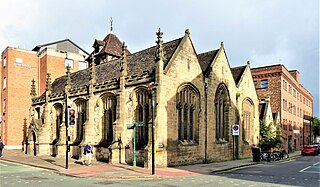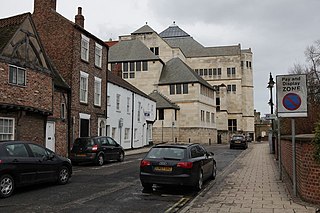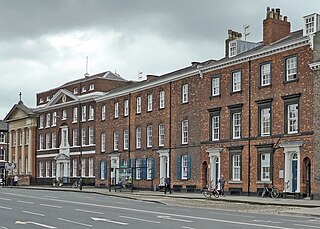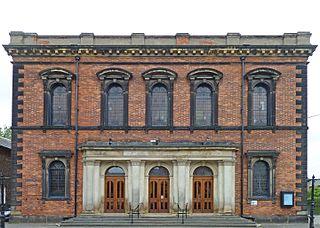
Clifton is a suburb of York in the unitary authority of the City of York, in the north of England about 1+1⁄2 miles from the city centre. The A19, passes north out of York through Clifton.

Fishergate is a street and surrounding area of York, England.

York has, since Roman times, been defended by walls of one form or another. To this day, substantial portions of the walls remain, and York has more miles of intact wall than any other city in England. They are known variously as York City Walls, the Bar Walls and the Roman walls. The walls are generally 13 feet (4m) high and 6 feet (1.8m) wide. They are the longest town walls in England.
York had around 45 parish churches in 1300. Twenty survive, in whole or in part, a number surpassed in England only by Norwich, and 12 are used for worship. This article consists of a list of medieval churches which still exist in whole or in part, and a list of medieval churches which are known to have existed in the past but have been completely demolished.
York and its district, the City of York, has many distinct localities, suburbs and villages.

Holy Trinity Church, Micklegate, York is a Grade I listed parish church in the Church of England in York.

St John's Church, Ousebridge, Micklegate, York is a Grade II* listed former parish church in the Church of England in York.

Bishophill is an area of central York, in England. It lies within the city walls and has been occupied since at least the Roman period.

King's Staith is a street in the city centre of York, in England.

Jacobs Well is a mediaeval Grade I listed building in the Micklegate area of York, in England. It is the church hall of Holy Trinity, Micklegate.

North Street is a road in the city centre of York, in England.

Skeldergate is a street in the city centre of York, in England. The street is now primarily residential, with many of its warehouse buildings having been converted into apartments.

Walmgate is a street in the city centre of York, in England. During the Medieval period, the street was the site of a seafish and cattle market. Walmgate Bar was involved in the Siege of York in 1644, during the First English Civil War. During the 20th century, many of the older buildings were cleared away and newer structures put up.

Ousegate is a street in the city centre of York, in England. It is divided into High Ousegate and Low Ousegate.

Petergate is a street in the city centre of York, in England. It is divided into High Petergate and Low Petergate. The well-known view of the Minster from Low Petergate is described by the City of York Council as "excellent".

Blossom Street is a road in York, in England, immediately west of the city centre.

Marygate is a street in York, England, running just north of the city centre. Built in the Middle Ages, it gets its name from St Mary's Abbey and the Viking word "gata," meaning street. The area where the street lies was outside the walls of the Roman city of Eboracum, and represented the northern limit of the settlement; to the north, the land was used only for burials. The street runs south-west, from Bootham, down to the River Ouse.

Tanner Row is a street in the city centre of York, in England.

The Wesley Chapel on Priory Street, in the Bishophill area of York, in England, is a grade II* listed building.

The Priory is a pub on Micklegate, in the city centre of York, in England.
























